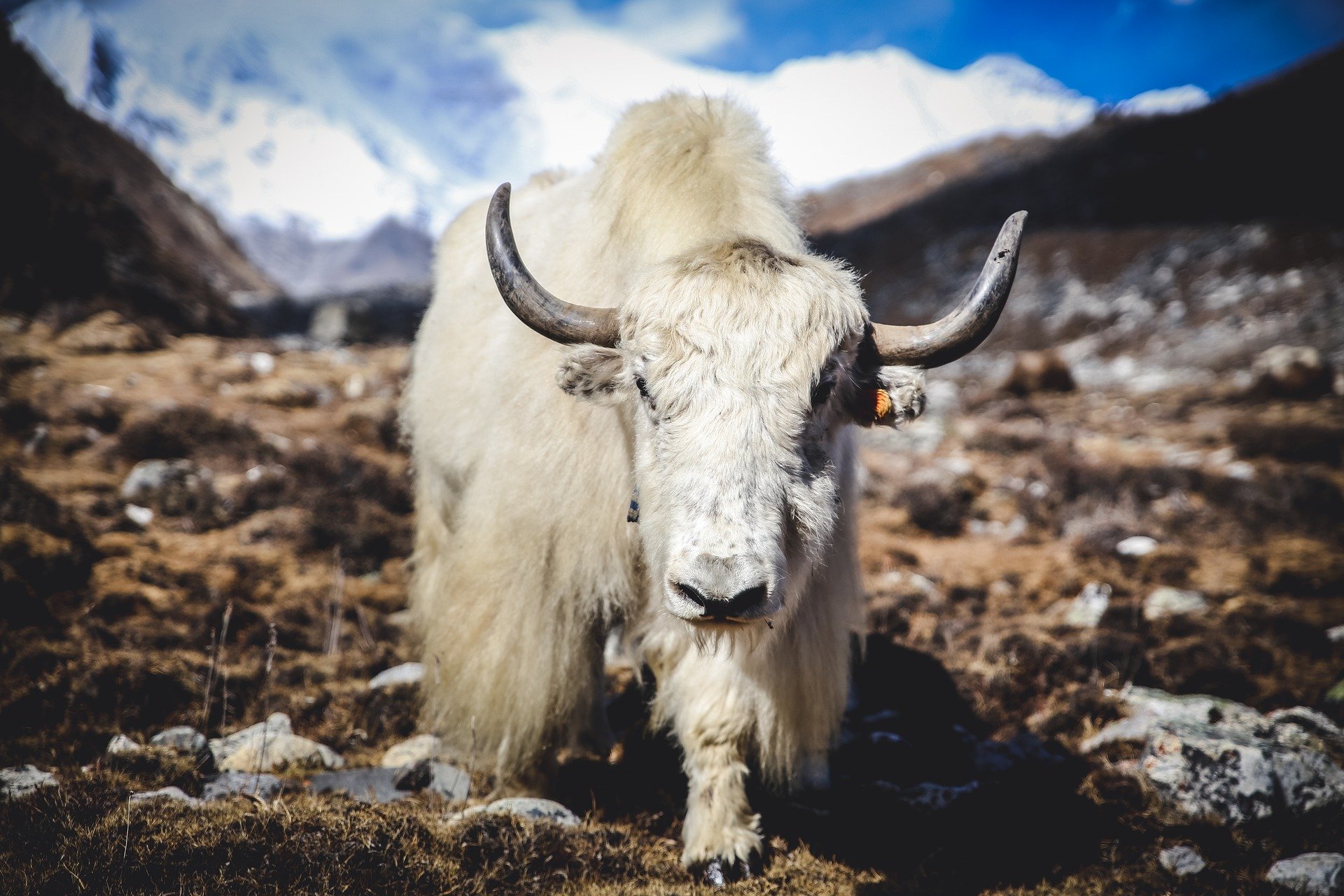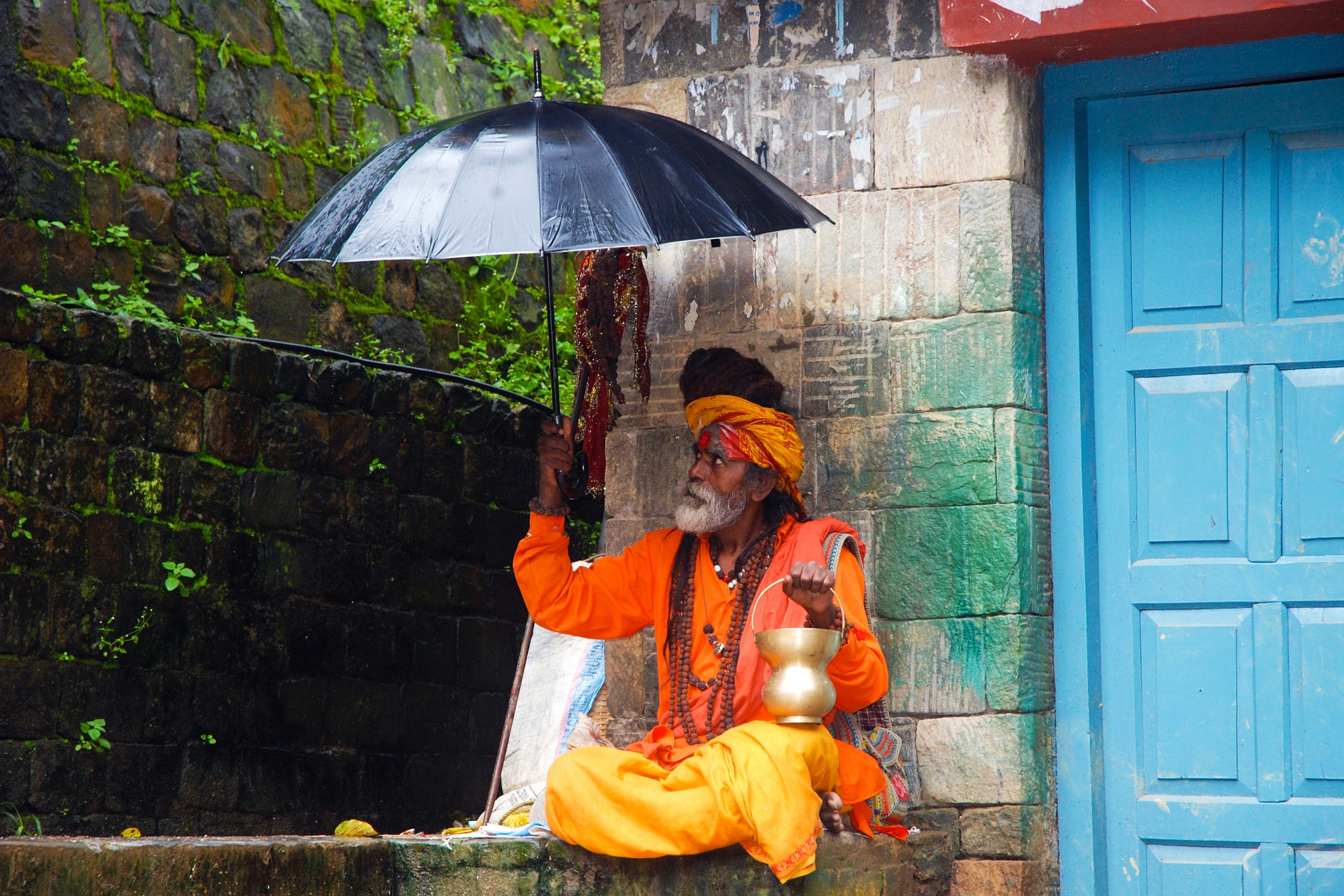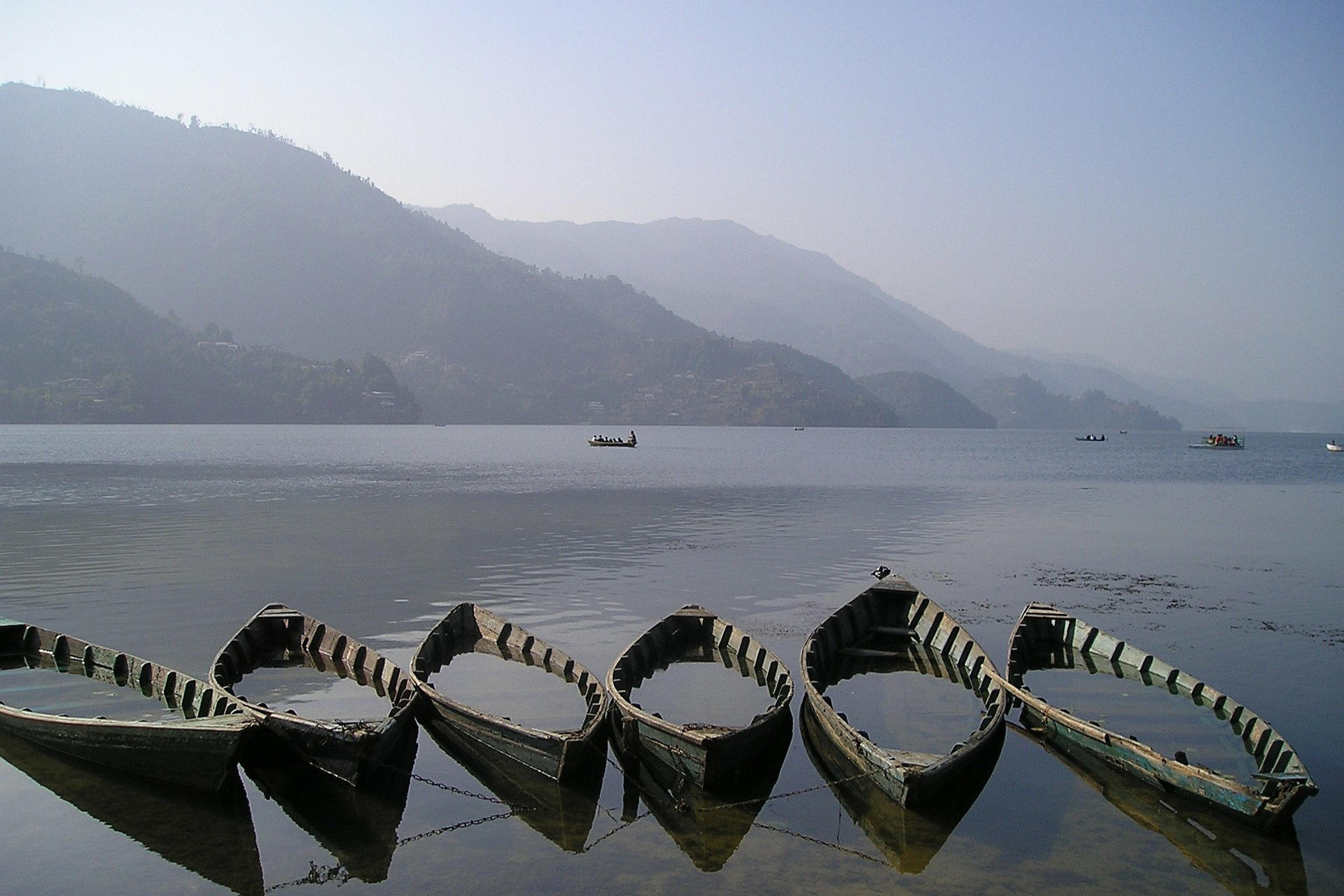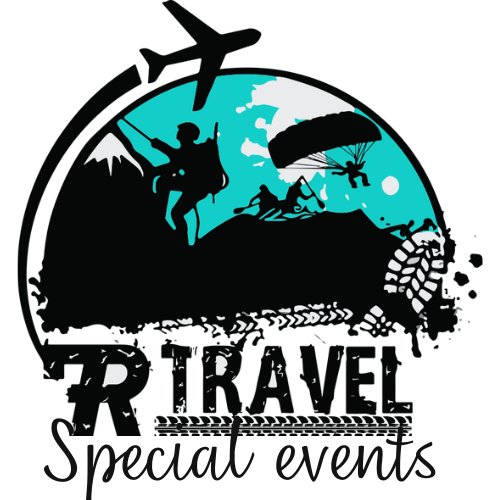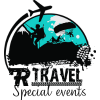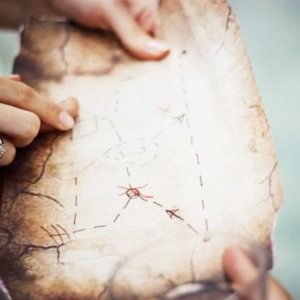Nepal
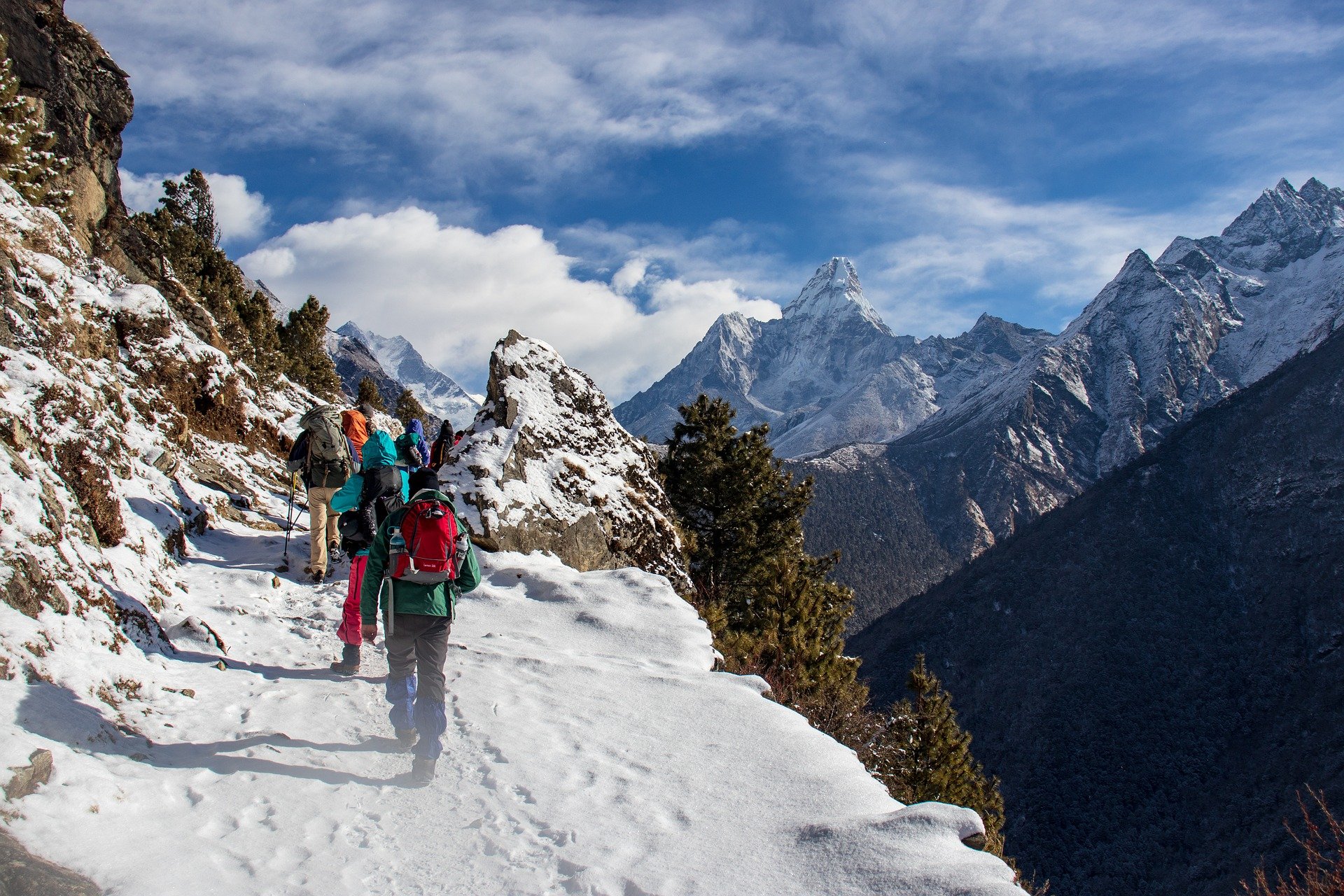
Sports and adventures
Nepal is not only a trekking paradise, but it offers the possibility of doing many sporting activities.
Here we show you the ones that we believe are absolutely worth trying.
On the Sport page you will find the technical data sheets of the sports activities and if you want to receive custom itineraries that include these activities, send us an email. We’ll create a travel program that reflects your wishes and physical preparation.
- Paragliding: flying over the Himalayas is spectacular, thanks to the breath-taking views of the mountains and to the amazing nature.
- Bungee jumping: Nepal has one of the most spectacular bungee jumping spots in the world, over 160m above the Bhote Koshi River.
- Canyoning and rafting: thanks to these two sports you can experience intense adrenaline rushes immersed in areas not touched by mass tourism. Also discover the country through the “waterways”, passing through villages, gorges and jungles. Depending on the season, the waterways can be classified from 3rd to 6th level. The best time for rafting is from late September / early October to late November, when the air is clear, temperatures are mild and the water is temperate, the water flow is high and fun is guaranteed.
- Horse trekking: you can organize many trekking on horseback through routes in inland areas of Nepal.
- Rock climbing: the “Trekking Peaks” up to Eight Thousand are certainly one of the main reasons why people come to Nepal from anywhere in the world. Here there are technically easy peaks (suitable for mountaineers) up to very challenging ones. In addition, artificial and natural gyms are increasingly popular where you can have fun for half a day up to several days of rock climbing with specialized guides.
- Trekking: as we said, Nepal is one of the world’s favourite trekking destinations, especially in the Himalayas. It is an activity that allows everyone (you just need a minimum of physical preparation and a spirit of adaptation) to admire the highest and most impressive mountains in the world up close. You have a wide range of possibilities: from walking for a few days to extreme trekking, like real expeditions. If you want to organize the trek by yourself, there are areas open to individual trekking (in the Everest, Annapurna, Langtang odel Helambu regions) where it is not mandatory to have a trekking guide to accompany you. If, on the other hand, you do not have time or desire to take care of the organization, you just want to think about trekking and enjoy the view and you want to have a guide, a porter for the luggage, someone who takes care of the authorizations and everything that involves an activity like this, contact us to organize your day or multi-day excursion. We will contact our trekking agency contact person, the only ones who can legally organize a trekking in Nepal.
- Mountain biking: the dirt roads and paths that connect the villages are ideal for mountain bike lovers. There are routes for all levels of preparation, from day trips to week-long expeditions to remote areas such as Annapurna. The best season for mountain biking in Nepal depends on the areas. It can generally be practiced all year round, except from June to September (monsoon period). Be careful to obtain the necessary permits to access some areas, or contact us to organize the tour.
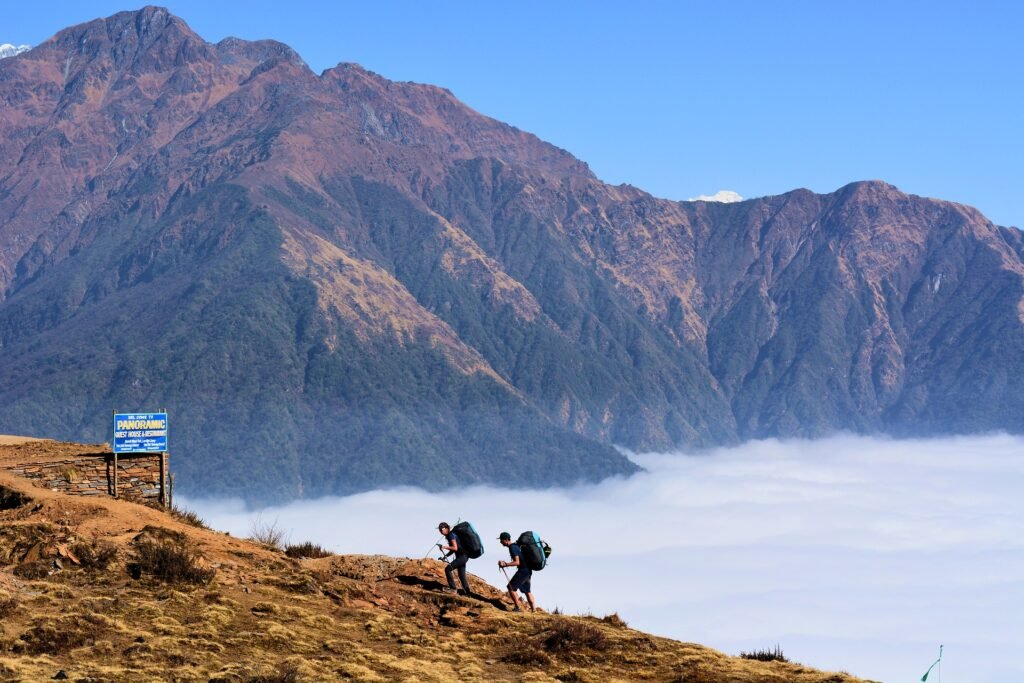
Trekking on Hymalaya
Experiences
Here are some of the unique and exciting experiences you could live in this destination:
- Visit Nepal by motorbike: let’s get organize, by us obviously, an itinerary to visit Nepal by motorbike, accompanied by a local guide or alone.
- Visit a National Park, like the Chitwan, or one of the lesser known ones, such as Bardiya and Sagarmatha: here you can try the experience of climbing an elephant, canoeing in the jungle or, if you are lucky, spot a tiger, a rhino or a crocodile.
- Attend the Rato Machhendranath Festival: it takes place in April / May in Patan and is celebrated by both Buddhists and Hindus. The image of Machhendranath (which for Buddhists is the incarnation of Avalokiteshvara, while Hindus see him as an incarnation of Shiva) is carried on an immense chariot, from the Temple of Rato Machhendranath to nearby Jawalakhel.
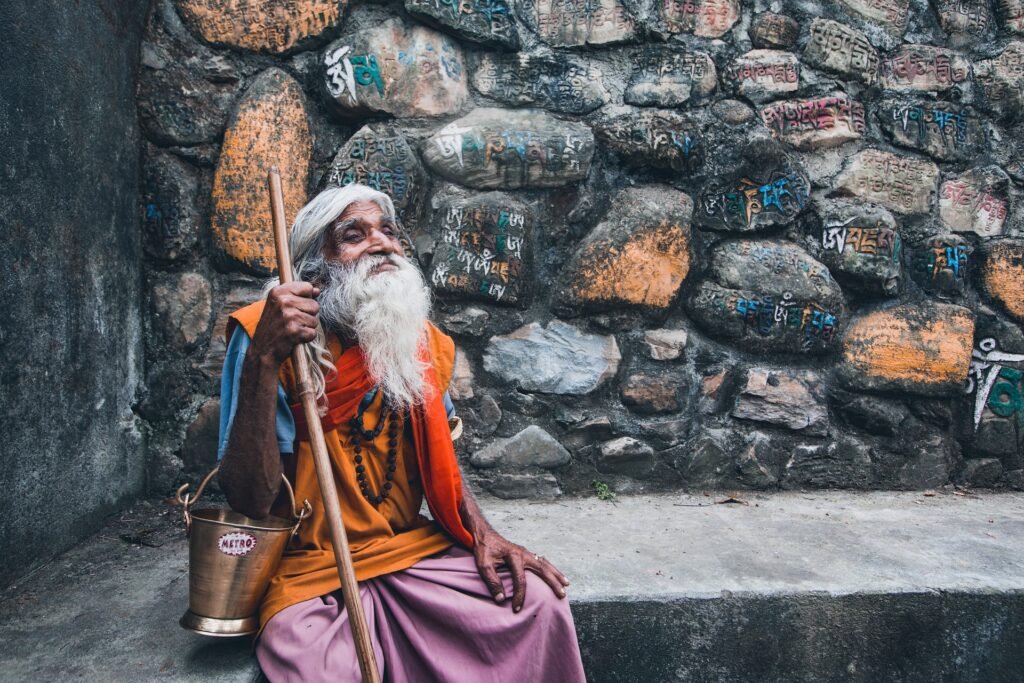
Man in typical clothes
What to see
Nepal offers wonderful locations that are absolutely worth visiting. Here you have some:
- Kathmandu: capital and cultural center of Nepal, with its Hanumandhoka Durbar Square and the stupas in Boudhanath, the largest Buddhist stupa in Nepal, and Swayambhunath.
- Bhaktapur: historic city, a UNESCO World Heritage Site, known for its temple for which it is a pilgrimage destination.
- Patan: Once a city-state, now almost a suburb of Kathmandu, a World Heritage Site, visit the spectacular Durbar Sq with a collection of amazing temples and palaces. Another good reason to come here is to take advantage of the shops and restaurants and fair trade shops, which sell quality crafts at fair prices.
- Pokhara: Picturesque lakeside town, a favorite destination for travelers for its stunning scenery, adventure sports, restaurants, hotels, and vibrant nightlife.
- Namche Bazaar: A high-altitude Sherpa settlement in the Khumbu Himalayan region and a popular stop for hikers on the way to Everest Base Camp.
- Tangting: a beautiful and remote traditional Gurung village with a breathtaking view of Annapurna.
- Lumbini: the sacred birthplace of Shakyamuni Buddha.
- Janakpur: a historical religious center and home to the 500-year-old Janaki temple.
- Pashupatinath: a famous and sacred Hindu temple complex located on the banks of the Bagmati River.
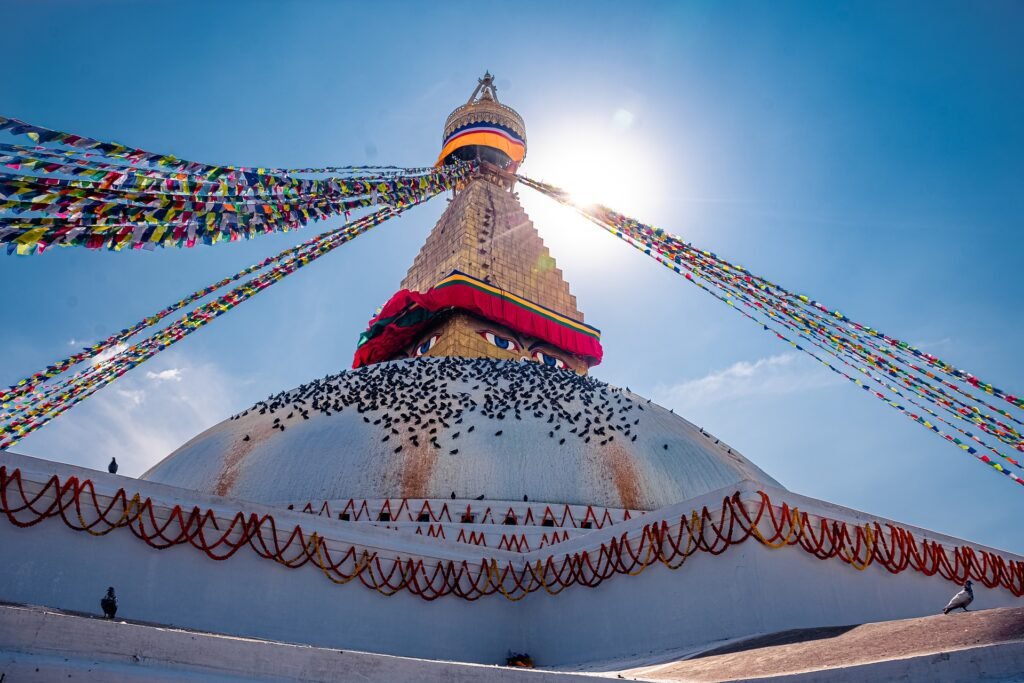
Temple (Stupa)
Food and Wine
Nepal has absorbed the culinary influences of adjacent areas, such as China (Tibet) and India.
Traditional cuisine is simple, while urban offer excellent international cuisine: from Afghan bread to Thai rice, Chinese noodles and Indian curries, but also steaks and pizza.
Many dishes in Nepal are quite spicy.
The primary dish of Nepalese cuisine is Dal Bhat, consisting of rice (Bhat), a lentil soup (Dal), vegetable curry (tarkari) prepared in different ways, and sometimes a few pieces of meat (masu).
The bread is prepared as chapati (similar to a flatbread) and eaten alongside curry and Dal.
Very popular are the momo, rice pasta ravioli mainly filled with buffalo meat (cow meat, being sacred, is not eaten) or vegetables, chicken, cheese and eggs.
The further north you go, the more the cuisine is oriented towards Tibetan cuisine: tsampa, potatoes and Yak meat.
A special note deserves the Newari cuisine, that derives from people who created the art and architecture of the temples and palaces of the kingdom of Nepal.
The cuisine is very varied and refined and is very close to the Chinese one, which mix up Tibetan elements and unique recipes.
In Nepal, the main drink is tea (chiya). The most popular version is black tea with milk, water and spices (masala).
Among the spirits, widespread and very drunk by the local population, there is rice wine, Rakshi, the famous distillate of the Newari “Aila” similar to our classic grappa.
Beer is also produced locally and is quite popular, as are Rum and Whiskey.
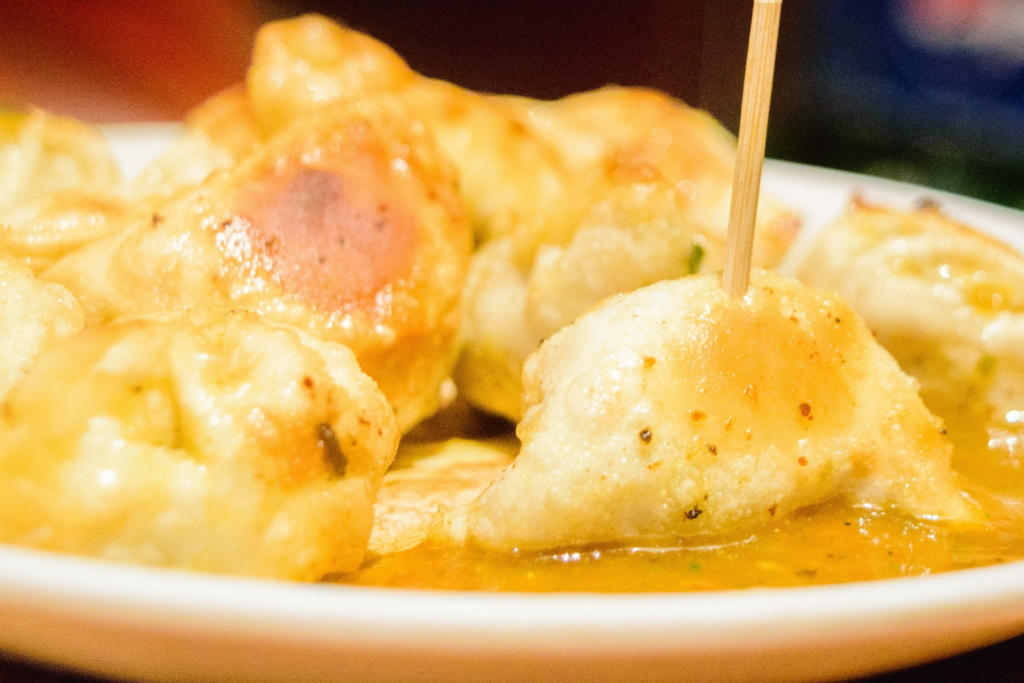
A plate of Momo
When to go
The climate of Nepal allows you to travel to this country all year round.
It is never too hot or too cold, except above 3500m where winter is harsh.
The climate is called Himalayan – temperate and ranges from subtropical climate in the south to dry and alpine-arctic in the north of the country.
There are two main seasons: the dry one and the monsoon one.
The dry season runs from mid-October to late May / early June, with little rainfall.
The monsoon season begins around mid-June and ends in late September-early October.
What to pack
Of course, what to pack for a trip to Nepal depends on what activities you will do and, above all, on the period when you go there.
Below we give you just a few indications on what absolutely must not be missing.
For trips that do not include altitudes above 2500 meters and not considering sporting activities that require specific clothing and equipment.
From March to April and from September to early November the temperatures are mild to warm and you can wear a t-shirt, but pack some warm cloth, such as a pile or a warm shirt, because the temperatures are cooler in the evening.
From May to September the temperatures are warm and you can wear just a T-shirt and no warm clothes are needed.
For the monsoon season waterproof shoes are essential, a few more spare parts for the rain and light clothing.
During the winter from mid-November to mid-late February the days, if sunny, are mild to warm, for the evening and morning a very warm pile or sweater or a warm jacket is always needed, as well as a scarf and a cap, because in the evening the temperatures are cooler, between December and January even cold.
Always bring a waterproof jacket and a sun hat.
Generally, shorts, skirts above the knee and tank tops are considered “provocative” clothing, therefore we advise against wearing them.
Cheap clothing can be purchased on site.
You will also find sportswear, generally cheap and made in Nepal, usually not qualitative excellent, but you will also find international brands in partner shops, with quality and prices as in Europe.
Information
Continent: Asia
Capital: Kathmandu
Language: Khas Bhasa is the country’s official language. “Gorkhali” or Nepali based on the ancient language of western Nepal is widely spoken. Hundreds of other minor languages are widespread.
Currency: Nepalese rupee – NPR – Re, NRs or ₨. The Euro is a currency that is changed and accepted in Nepal.
Electricity & Plug Type: type C, D, M plugs. Standard voltage 230 Volt. Standard frequency 50 Hz.
For up-to-date and detailed information visit www.viaggiaresicuri.it
Some tips
We are sure that trekking to the highest peaks in the world is very attractive to you too, so here are some tips to avoid altitude sickness:
- Keep a steady pace, a steady that you are able to maintain over time.
- Listen to your body and try to warn of any symptoms of malaise due to altitude, such as headaches, light dizziness, etc … If you feel them, avoid going up.
- After 3000 meters it is advisable never to sleep above 500 meters compared to the previous night.
- Drink plenty of water. Staying hydrated is key.
Your guides will give you precise directions for a safe trek.
